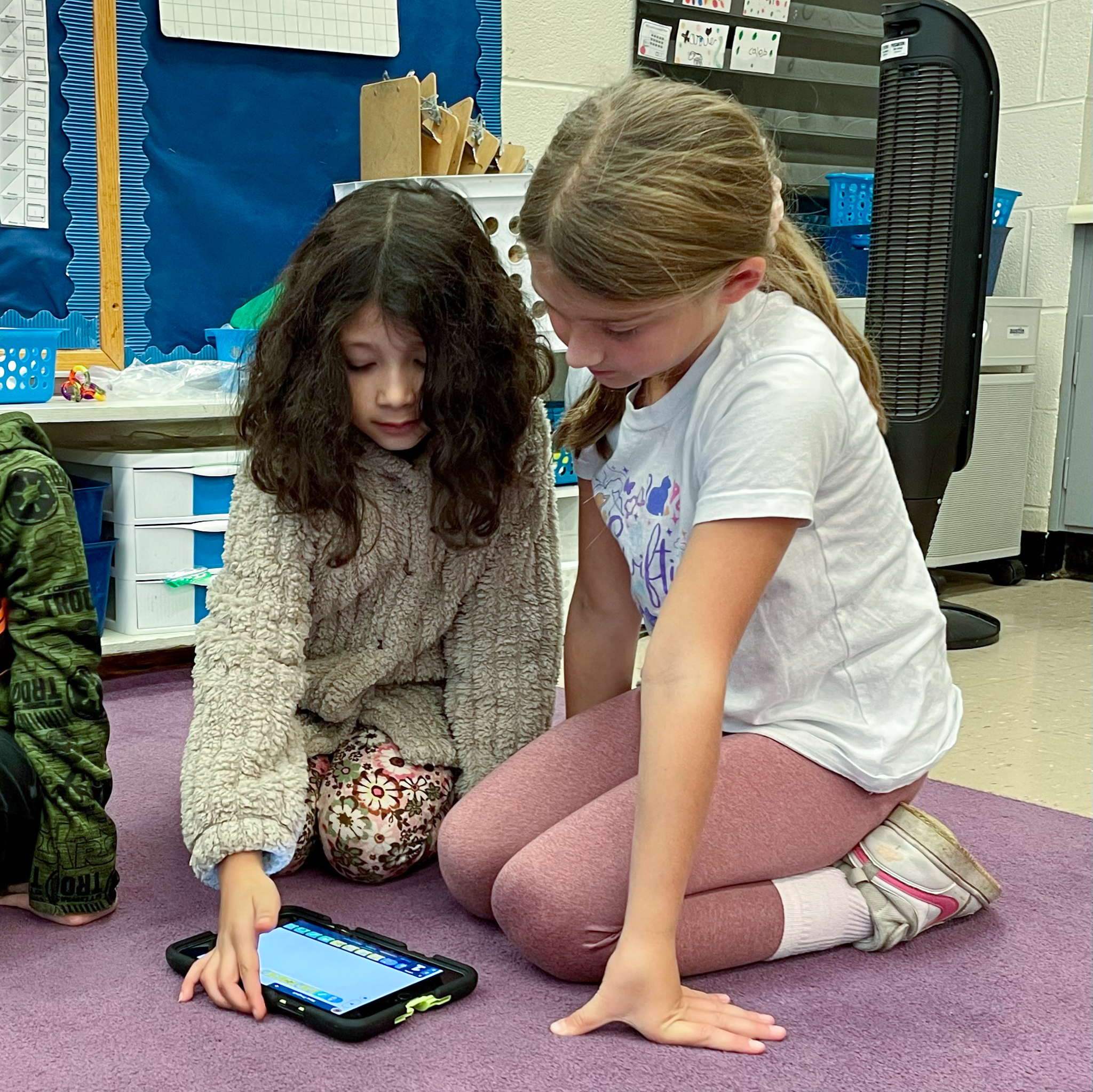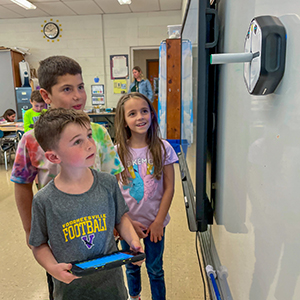 Recently, the second graders in Emily Leczinsky’s class teamed up with some tiny teachers for a robotics lesson in “ghostbusting.” This was a fun, hands-on way for students to apply what they have been learning in class to a real life situation—something Leczinsky says is essential for the learning to “stick” with the students.
Recently, the second graders in Emily Leczinsky’s class teamed up with some tiny teachers for a robotics lesson in “ghostbusting.” This was a fun, hands-on way for students to apply what they have been learning in class to a real life situation—something Leczinsky says is essential for the learning to “stick” with the students.
Benchmarks built into the New York State learning standards for each k-12 grade level are designed to help students become skilled at using digital technologies such as computers, smart boards and other tools to find, evaluate and communicate information.
 This activity in coding the robot “ghosts” to create trails to follow before being erased by “ghostbusting” robots helped bring their knowledge to life.
This activity in coding the robot “ghosts” to create trails to follow before being erased by “ghostbusting” robots helped bring their knowledge to life.
“Over the years, my students have become so immersed in technology,” said Leczinsky. “They play video games at home, use educational websites in school, use tablets and phones in the car. I started including different coding-related activities a few years back so students could see what goes on behind the scenes of this technology that is such a big part of their lives. This activity with the iRobots was a really engaging way for them to participate in coding in a tangible way.”
The experience, led by the educators on the Northeastern Regional Information Center’s (NERIC) Model Schools team, also gave Leczinsky the chance to learn right along with her students.
“I learn technology best when I see it in action. Having the educators from NERIC lead us through this activity helped me see how this would work in my classroom, and gave me confidence that I could bring these robots into the classroom again and tailor an activity to one of our academic standards. I’m already thinking of ways to incorporate the technology into a math lesson in the future,” Leczinsky continued. “And as a member of the district’s Technology Committee, I will now be able to share with the group about how doing more of this type of learning could benefit our students across the grade levels.”
